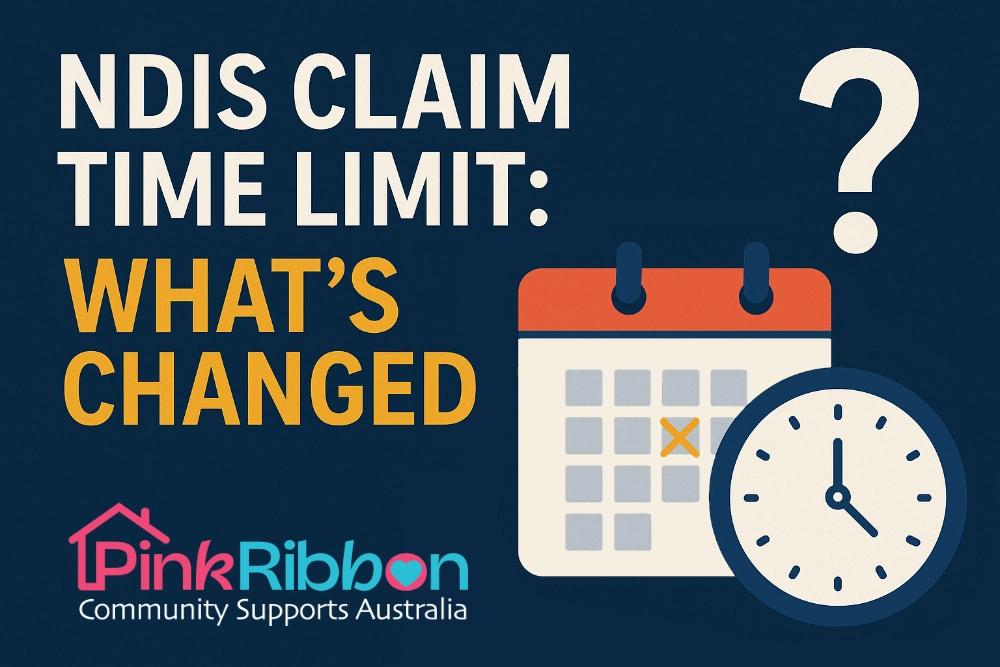As a registered NDIS Provider, Pink Ribbon Community Supports Australia is now officially able to provide SDA properties with SIL.
To apply for SDA funding through the NDIS, you’ll need to show that you have high support needs and require specialist housing. Work with your support coordinator and allied health professionals to gather evidence, complete assessments, and submit documentation that demonstrates how SDA will help you live more independently.
Finding the right home is a big step for everyone, and Specialist Disability Accommodation (SDA) can open up new possibilities for independence.
The process of applying for SDA through the NDIS can seem complex at first, but with the right information and support, you can navigate it with confidence.
Here are some practical tips to get you started:
- 1. Understand What SDA and SIL Is (and Isn’t)
You may not realise, but SDA and SIL are funded separately in your NDIS plan.
– SDA (Specialist Disability Accommodation): This is funding for the physical home. It’s for participants with extreme functional impairment or very high support needs who require a specialist home to live safely and independently.
– SIL (Supported Independent Living): This is funding for the support services you receive within the home. This can include help with personal care, household tasks, and building skills to live as independently as possible.
To receive SDA funding, you need to provide evidence showing why you need a specialist home. For SIL, you need to demonstrate your need for daily, person-to-person support.
- 2. Confirm Your Eligibility
To access SDA funding, you’ll need to show the NDIA that it’s a necessary and reasonable support for you.
This involves demonstrating your high support needs and how a specially designed home would help you pursue your goals, increase your independence, and reduce your need for person-to-person supports.
- 3. Gather Your Evidence
Strong documentation is key to a successful application. You’ll need to build a comprehensive case that paints a clear picture of your needs.Work with your allied health professionals, like occupational therapists (OTs), to get assessments that specifically address your housing needs.
These reports should detail:
– Your functional capacity and what you can and can’t do.
– Your current living situation and why it’s no longer suitable.
– How an SDA home would specifically benefit you and help you achieve your goals.Don’t forget to include reports from other specialists, support workers, and even a personal statement from you or your family about your housing aspirations.
- 4. Lean on Your Support Coordinator
Your Pink Ribbon Community Supports Support Coordinator can be your greatest ally in this process.
They have the expertise to guide you, help you find the right professionals to write your reports, and ensure all your paperwork is in order before you submit it.
They can translate the NDIS jargon, connect you with potential SDA providers, and advocate for you along the way. If you don’t have a Support Coordinator, consider requesting one in your NDIS plan.
- 5. Explore Your Housing Options
While you’re working on your application, start researching the types of SDA available.There are different design categories (like Improved Liveability, Fully Accessible, Robust, and High Physical Support) and building types (apartments, villas, houses). Think about what would suit you best.
Other things to consider include:
- Where do you want to live?
- Do you want to live alone or with others?
- What features are essential for your daily life?
Navigating the SDA process takes time and effort, but you don’t have to do it alone.
By taking it one step at a time and using the support network of Pink Ribbon Community Supports Australia, you can move closer to finding a home that truly meets your needs and supports your independence.
If you’re exploring SDA or SIL housing, reach out to us below. We can help you understand your options and connect you with the right supports.







